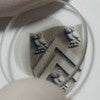
Rice physicist shares grant to advance imaging
The lab of physicist Junichiro Kono will share in a $1 million grant from the Chan Zuckerberg Initiative to improve imaging of proteins, cells and tissues.

Rice physicist shares grant to advance imaging
The lab of physicist Junichiro Kono will share in a $1 million grant from the Chan Zuckerberg Initiative to improve imaging of proteins, cells and tissues.

Mitochondrial stress ‘ages’ astronauts
Astronauts appear to age faster in space, but understanding why could mitigate the effects for future long-distance travelers.
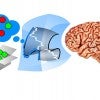
AI helps scientists understand brain activity behind thoughts
Researchers from Baylor College of Medicine and Rice University have developed artificial intelligence models that help them better understand the brain computations that underlie thoughts.

For one Rice University classroom that is all about the hands-on experience, the fall of 2020 was a test. It appears to have passed.

Rice names new round of IDEA winners
Six teams of Rice researchers have won backing from the InterDisciplinary Excellence Awards.

Once-discounted binding mechanism may be key to targeting viruses
Researchers detail subtle stabilizing effects in cells’ ability to recognize coronaviruses that compromise the immune system. The discovery could lead to new targets to prevent disease.
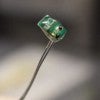
Rice researchers top two categories in ‘Create the Future’ contest
Rice University was a double winner in the annual Create the Future Design Contest, an international competition in its 19th year.
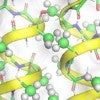
Folding proteins feel the heat, and cold
A new study shows proteins that presumably evolved to avoid water as they fold may actually behave in ways scientists did not anticipate.
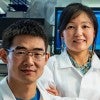
Industrial-strength brine, meet your kryptonite
A thin coating of the 2D nanomaterial hexagonal boron nitride is the key ingredient in a cost-effective technology developed by Rice University engineers for desalinating industrial-strength brine.
Rice team tops Collegiate Inventors Competition
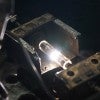
VIPs help open national security research accelerator labs
U.S. Army Futures Command Lt. Gen. Thomas Todd III and U.S. Rep. Dan Crenshaw, R-Texas, joined Rice President David Leebron, Provost Reggie DesRoches and Army and Rice dignitaries for the Oct. 30 opening ceremony of the Rice University National Security Research Accelerator (RUNSRA) laboratories in Dell Butcher Hall.

Malaria test as simple as a bandage
HOUSTON – (Nov. 2, 2020) – Testing for malaria could become as simple as putting on a bandage.

Rice finds path to nanodiamond from graphene
Rice University researchers expand their theory on converting graphene into 2D diamond, or diamane.

A trillion turns of light nets terahertz polarized bytes
Nanophotonics researchers at Rice University, the Polytechnic University of Milan and the Italian Institute of Technology have demonstrated a novel technique for modulating light at terahertz frequencies with plasmonic metasurfaces.

Haotian Wang wins Packard Fellowship
Haotian Wang has been honored with a Packard Fellowship, one of 20 researchers in the nation to do so this year.